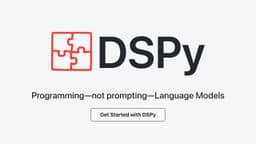Jumpstart Your AI Projects with Vertex AI
Artificial Intelligence (AI) and Machine Learning (ML) are becoming accessible to various businesses and individuals. Vertex AI from Google Cloud offers user-friendly tools to harness the power of AI for practical solutions. This guide outlines the steps to get started with Vertex AI.
Step 1: Understand the Basics of Vertex AI
What is Vertex AI? It is an integrated ML platform that combines AutoML and AI Platform services. Vertex AI helps users build, deploy, and scale ML models quickly using Google’s secure infrastructure.
Step 2: Set up a Google Cloud Account
To use Vertex AI, you need a Google Cloud account. New customers often receive a free trial with credits to explore services.
Step 3: Create a New Project
After setting up your Google Cloud account, create a new project. This allows you to customize your space in the cloud. Navigate to the Google Cloud Console and select "New Project." Choose a name that reflects your goals.
Step 4: Enable Vertex AI API
Enable the Vertex AI API for your project. Go to the "API & Services" dashboard in the Cloud Console, find Vertex AI, and click "Enable." This will activate the capabilities of Vertex AI.
Step 5: Explore the Vertex AI Workbench
Vertex AI includes the Vertex AI Workbench. This environment lets you write, run, and debug your ML workflows. Familiarize yourself with its interface and experiment with frameworks like TensorFlow or PyTorch.
Step 6: Experiment with AutoML
AutoML within Vertex AI simplifies the model training process. It allows you to create high-quality models with minimal effort. Just provide your data, and Vertex AI handles the training automation. Recent updates have expanded customization options and performance metrics.
Step 7: Train Your First Model
Identify a simple ML problem to solve. Gather your dataset, and access the "Training" section of Vertex AI. Follow the steps to train your model by uploading your data and setting parameters.
Step 8: Deploy and Use Your Model
Once trained, it's time to deploy your model. You can deploy it to an endpoint to receive predictions. This enables your model to provide real-time insights.
Step 9: Scale Up or Down as Needed
Vertex AI offers scalability. As your project evolves, increase your resources easily. If you are experimenting, reduce resources to save costs. Recent improvements have enhanced these scaling capabilities.
Step 10: Iterate and Improve
AI and ML thrive on iteration. Use metrics from Vertex AI to assess model performance. Adjust, retrain, and redeploy your models for better results. Vertex AI provides analytical tools to visualize performance and optimize your models.
Embrace the Support and Community
You have support throughout this process. Google Cloud offers documentation, community forums, and assistance. The AI community is also active and ready to share knowledge.
With Vertex AI, venturing into AI is more approachable. Start your journey with confidence and explore the vast potentials of machine learning.












